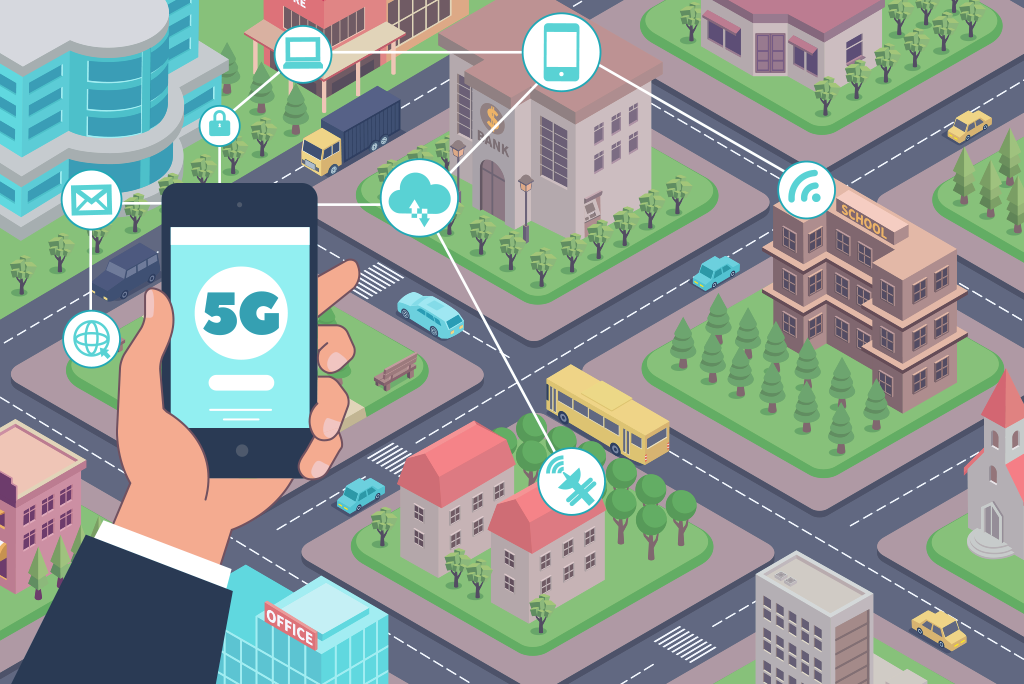
With the emergence of 5G technology, cities all over the world are rapidly transforming, and local governments are scrambling to adjust. David Witkowski, an expert in wireless telecommunications and Co-Chair of the Deployment Working Group at IEEE Future Networks, recently sat down with IEEE Future Networks to discuss how the shift to 5G will impact local communities and governments.
Below is a summary of a recent interview with Witkowski, who will present the upcoming Bridging the 4G/5G Gap: Telecommunications Roadmap for Implementation virtual event on 10 March and 9 June 2021.
Moving from 4G to 5G Requires More Than Simply Flipping a Switch On A New Technology. What Do City Planners and Public Works Officials Need to Know?
While 4G depends on macro “monopole” towers that cover hundreds of square miles, 5G technology relies on small cell sites installed in neighborhoods. These cell sites are usually attached to rooftops, telephone poles, and utility poles in the public rights of way (public property, such as a street or sidewalk). As a result, the number of applications for installations that local governments need to approve has gone up dramatically. At the same time, there has been an explosion in the use of wireless devices among the public.
“I think it’s really important that cities learn how this technology works, that they become well versed in the topic, and to help bridge the gap between the macro monopole world that they were in and the small cell world that we’re entering today,” states Witkowski.
He mentions that the amount of work cities must do to review and approve permits for wireless communications facilities and the public rights of way is going to continue to increase.
“And so I think it’s incumbent upon all stakeholders, municipals, agencies and the industry itself to understand this intersection, and to figure out how we’re going to bridge the gap between the tower monopole world that we were in five years ago to the small cell 5G world that we’re going into now,” he states.
What Role Does IEEE Future Networks Play in 5G Technology Globally?
The IEEE Future Networks Initiative aims to help facilitate the transition of local governments to 5G wireless and beyond. The initiative helps cities and the wireless industry come together to build a convening process between stakeholders and ensure they are communicating properly.
“I think that there are a lot of places where cities can go to learn about the technology, but what we’re doing is unique in that we’re working out, not only the technology questions, but we’re also working out that interface question, how to talk to the wireless industry, and likewise we’re also trying to help the industry understand how to talk to cities,” Witkowski states.
What is the IEEE Future Networks Deployment Working Group?
The IEEE Future Networks Deployment Working Group is a working group within the IEEE Future Networks Initiative. The Working Group is responsible for making sure 5G technology is deployable in a way that is not disruptive to local communities. City planners and public works officials are encouraged to participate in the working group to ensure the needs of their communities are considered and heard.
What is the IEEE Future Networks International Next Generation Roadmap (INGR)?
The IEEE Future Networks International Next Generation Roadmap aims to bring together technologists whose vision extends to 6G technology and beyond, and who will work together to create a roadmap to get there.
“There is no formal definition of 6G, no one has begun working on definitions for 6G or technologies that would adhere to the United Nations 6G definition, but it’s still important that we think about the question of where are we going in the long term. Telecommunications is far too important in our 21st century lives to be left to chance,” Witkowski states.
How Will Next-Generation Mobile Technologies Like 5G Improve The Lives of Citizens In Our Towns, Cities, and States?
In the 21st century, wireless communication is just as important as “electricity, water, gas or sanitation,” states Witkowski. “I call it the fifth utility. It’s just as important as those other technologies to make life in the 21st century possible.”
When people aren’t able to access next-generation mobile technologies, “we create a digital equity problem,” he adds.
“It’s something we need to be very programmatic about supporting and moving forward,” Witkowski states of the transition to next-generation wireless networks. “It can’t be left to chance. We can’t allow telecommunications to be an afterthought in our country.”
5G Networks
As technology continues to evolve toward 5G, it’s vital for technical professionals and industry leaders to understand how to deliver on the 5G vision while meeting consumer demand for higher communication speeds. Is your organization ready? Consider training your team with 5G Networks, a three-course program from IEEE and Nokia.
Connect with an IEEE Content Specialist today to learn more about the program.
Interested in learning more about 5G for yourself? Visit the IEEE Learning Network today!
Bridging the 4G/5G Gap
Prepare your organization for 5G, the next generation of wireless network technology. The IEEE two-course program, Bridging the 4G/5G Gap: Telecommunications Roadmap for Implementation, provides a historical overview of 4G/5G technology, identifies what is needed for 5G integration in a 3G/4G world, and showcases the scientific evidence surrounding wireless facilities’ impact on property value and human health, and more.
Contact an IEEE Content Specialist today to learn more about getting access to these courses for your organization.
Interested in the course for yourself? Visit the IEEE Learning Network.


No comments yet.